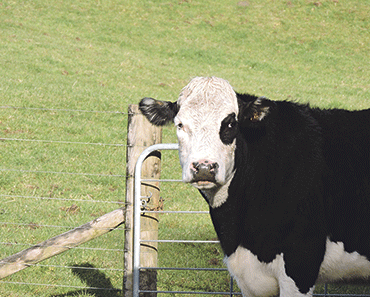While dairy farmers may be worrying about their future fertiliser application levels in the light of the Healthy Rivers Wai Ora recommendations, drystock farmers are in no doubt that they got the thin end of the wedge.
At a meeting last month in Hamilton, organised by a new group calling themselves Farmers for Positive Change, about 150 farmers turned up to find out just what they were facing in the next 10 years, and whether it would get worse for them after that.
The meeting lasted nearly three hours, and the various speakers got a good hearing, and were asked some very tricky questions. Some of the latter could not be answered because the Waikato Regional Council obviously has some longer term thinking to do on the implications for both individual farm economics, and the socio-economic effects on the numerous rural communities involved in the wide area. “Keep thinking about your communities” was an often-repeated mantra from various speakers.
So what are the issues upsetting the drystock sector most? The most often raised was ‘grandparenting’. Whether the council sees it as such, or not, these farmers see what is proposed as very much that – and they see it as morally wrong.
Natural capital
That high-user dairy farmers can, mostly, go on polluting with urea for another decade, while drystock farmers, who don’t use much anyway, can’t increase from their low levels when they need a boost to allow them to do such activities as dairy grazing when money is tight, seems somewhat lopsided.
The sheep and beef industry had only one representative on the Collaborative Stakeholder Group, with a backup when needed, while dairy had two plus some ‘sympathisers’ from other categories.
Efforts by the drystock representative to change the CSG’s focus from urea usage to assessing land for Natural Capital and Ecosystem Services, so it would be used to best advantage, apparently got nowhere. When multiple dairy farmers say: ‘You can’t grow grass without urea’ we have to ask just how influential the fertiliser industry is in what gets taught at tertiary level and to farmers by consultants?
Some interesting historical information was forthcoming from those who’d been involved in the planning and execution of Variation 5, which dealt with land use around Lake Taupo. At that stage there had been a fair degree of trust by farmers of how the council would treat them.
After living with the results, including apparent significant falls in land values, creeping costs and inability to make significant changes, much of that trust seems to have dissipated. And farmers are being exhorted to put in submissions this time, with B+LNZ supporting them by holding of nine workshops around the region to help farmers make the most of their submissions in relation to what implications the plan will have on their own farms.
Time consuming
It appears that to ensure accurate levels for each farm are used to calculate Nitrogen Reference Points based on the two relevant years will be very time-consuming for those farmers who haven’t filed their paperwork on fertiliser applications appropriately.
And it will be particularly difficult for those who’ve purchased land within that period, as records will have to be obtained from previous owners.
The implicit threat seemed to be that if you couldn’t prove it accurately, then your level would be set by the council at what was considered suitable for your sub-catchment.
As much drystock land is hilly, there is already some protest about the degrees of slope allowed to be farmed.
Apparently the Land & Water Forum had set their recommendations at a different level to what was being recommended now.
With vast lengths of “permanent water flows” supposedly now required to be fenced, some farmers had already discovered the planners would be recommending fences be put at the edges of flat land, and all slopes would be off-limits, whether or not erosion was likely to occur.
With about 6000 Farm Environment Plans required to be done, it appears the council-certified planners will be somewhat busy. But it was stressed at the meeting that planners would need to be very familiar with farming systems and would need to visit each farm for the system to work fairly. Whereas an ‘industry-based’ system could be used, the view was drystock farms were too different from each other to adopt a ‘tick box’ approach.
Black and white
While the legislatively-agreed Vision and Strategy for the Waikato River contains 13 objectives to be pursued, the plan change proposal has focused only on the swim-ability and food-taking objective. This seems to be regarded as a black and white issue akin to achieving the holy grail of being achieved 365 days a year, no matter what nature and climate change throw at us in the future.
They may have given us 80 years to achieve it, but it’s going to require some very persuasive reasoning, and the finding of methods which don’t put the region’s farmers out of business in the next few years.
The aim of Farmers for Positive Change is to involve the other land use interests – dairy, forestry, horticulture – in their approach to getting this vision achieved: ‘Vibrant provincial communities underpinned by resilient pastoral farm businesses utilising the natural resources in a sustainable manner’.



0 Comments
Leave a Comment